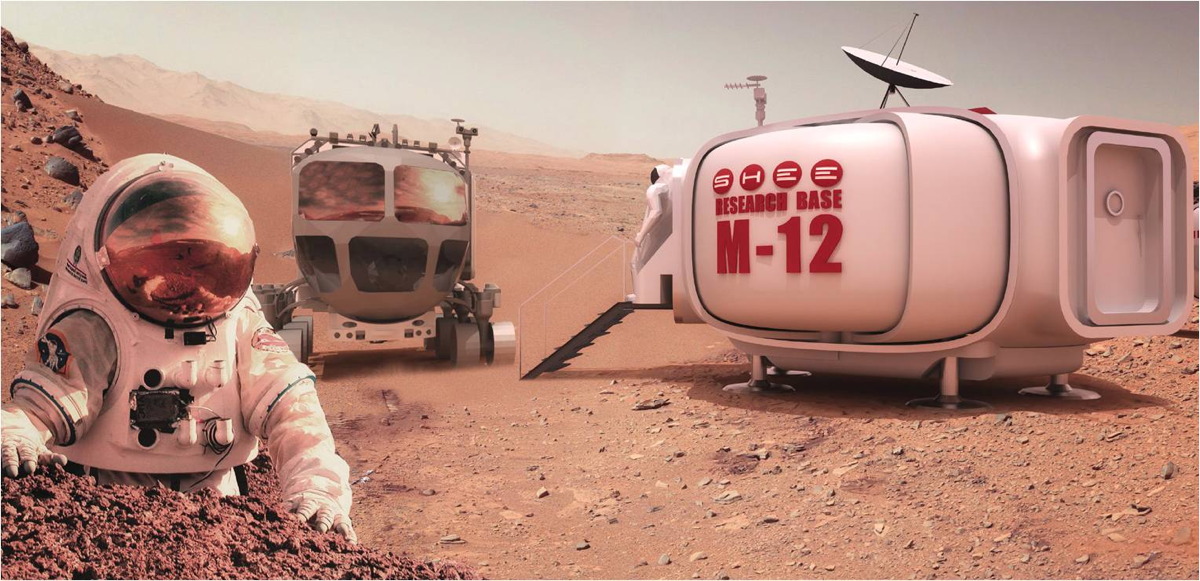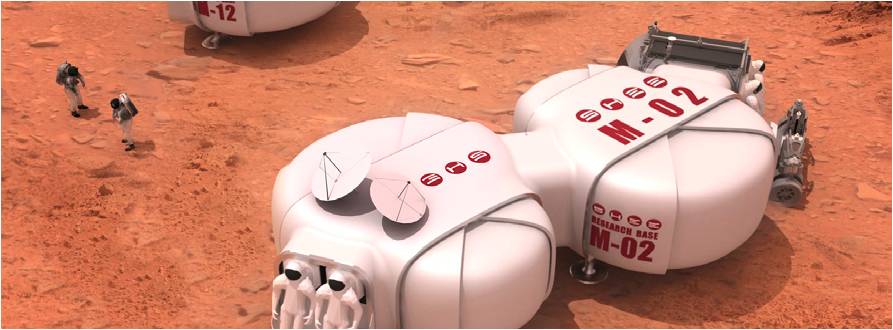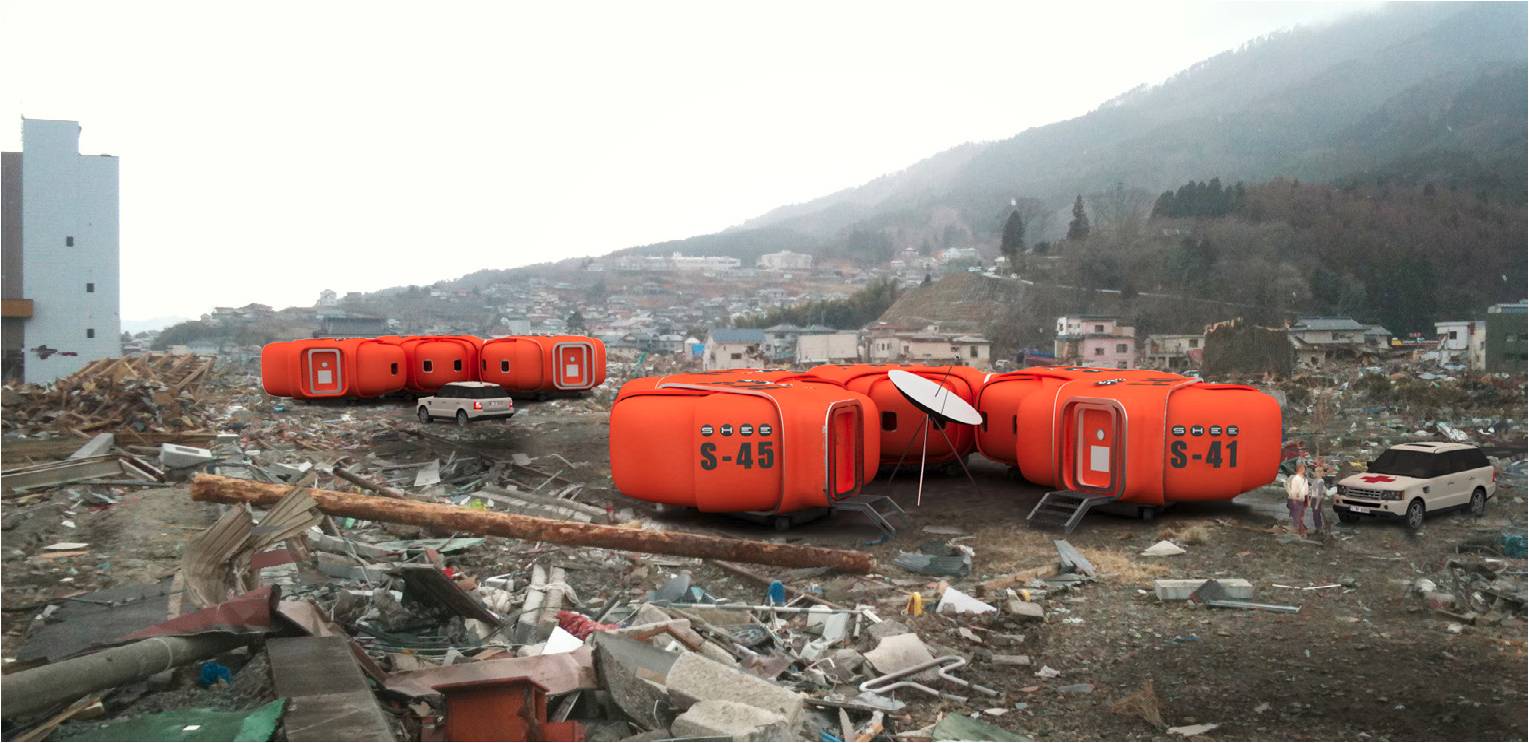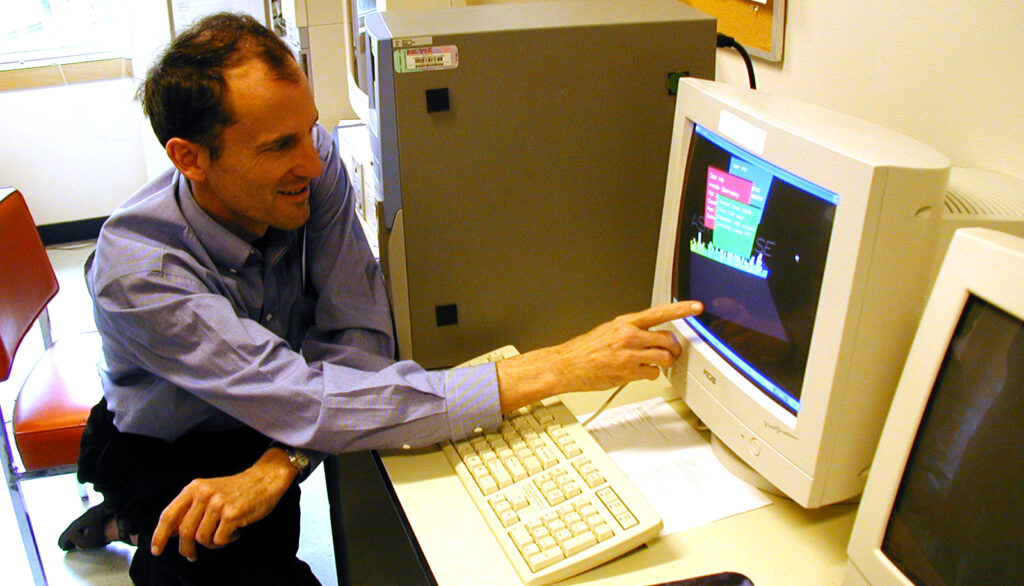
Future Mars Explorers Could Live in Habitats That Build Themselves

PASADENA, Calif. — Astronaut pioneers on the moon and Mars might live and work in cozy homes that build themselves.
That's the vision of the Self-deployable Habitat for Extreme Environments (SHEE) project, which is developing domiciles that could be useful both here on Earth and on alien worlds such as Mars.
SHEE is the product of a research idea initiated by architect Ondrej Doule, who detailed the concept Aug. 31 here at a session on space habitats at the American Institute of Aeronautics and Astronautics' (AIAA) Space 2015 meeting. [How Living on Mars Could Challenge Colonists (Infographic)]
Autonomous construction
Over the past few years, a consortium of five European countries has been working to design the European Union's first autonomously deployed space and terrestrial habitat.
The project has received grants from the European Union's Seventh Framework Program for research, technological development and demonstration. The 36-month project, which runs through December 2015, received a total of 2.3 million euros ($2.6 million at current exchange rates) in funding.
The premise behind the SHEE endeavor is that integrating human labor into construction on the surface of Mars or the moon is very risky, complex and costly, so autonomous construction methods should be applied to the extent possible.
The SHEE habitat is a hybrid structure composed of inflatable, rigid and robotic components. As currently envisioned, the domicile is divided into five major functional areas: entrance ports, work areas, private crew quarters, a kitchen and a toilet.
Breaking space news, the latest updates on rocket launches, skywatching events and more!
The habitat's interior can be custom-furnished and made useful according to specific research needs, its developers say.
Testing underway
SHEE has advanced beyond mere blueprints.
"The lab tests are ongoing," said Doule, who chairs the AIAA Space Architecture Technical Committee and serves as an assistant professor at the Florida Institute of Technology's Human-Centered Design Institute in Melbourne, Florida.
Doule is also the founder and managing director of the Space Innovations virtual studio in the Czech Republic.
A construction phase of the SHEE project has also been conducted at the University of Tartu in Estonia, Doule said.
"As with every prototype, there are issues that have to be addressed after first uses and transport, and also continuous integration that started in Estonia, so we are optimizing the system instantly," Doule told Space.com.
Once the system is ready, Doule said, the intention is to perform "no-humans-in-the-loop tests and operations" to verify that the SHEE can operate for up to 14 days in an extreme environment, as planned.
These tests will be performed at the International Space University in Strasbourg, France. "After that, we will be developing procedural instructions … a user manual to ensure maximum safety and system lifetime," Doule said.
Dusty environments
The first SHEE mission that's planned in an off-Earth analogue setting is related to another European Union Seventh Framework Program research project.
"The analog environment is located in Spain, where the SHEE should serve as a base for human-robotic interaction tests," Doule said. "This is the place where the SHEE gets dirty for the first time, and we will discover its capacity to work in dusty environments with its inflatable seals."
Doule said the biggest challenges ahead involve the endurance of the structure and the affordability of the system's folding mechanisms. "That's yet to be discovered," he said.
On-Earth applications
Here on Earth, scientists, explorers and researchers are limited by technical infrastructure and their ability to deploy bases in remote or hostile environments, Doule said.
A SHEE sustainable base would increase researchers' efficiency, allowing them to stay for long periods of time without leaving a large "ecological footprint," he added.
SHEE could also be used in areas damaged by human-made or natural disasters. Given SHEE's rapid self-deployable capability, partial subsystem autonomy and effective packing, the concept could provide people who lost their homes with long-term accommodation anywhere, without the need of immediate connection to an infrastructure, Doule said.
For more information on the SHEE project, go to www.shee.eu.
Leonard David has been reporting on the space industry for more than five decades. He is former director of research for the National Commission on Space and is co-author of Buzz Aldrin's new book, "Mission to Mars – My Vision for Space Exploration," published by National Geographic. Follow us @Spacedotcom, Facebook or Google+. Originally published on Space.com.

Leonard David is an award-winning space journalist who has been reporting on space activities for more than 50 years. Currently writing as Space.com's Space Insider Columnist among his other projects, Leonard has authored numerous books on space exploration, Mars missions and more, with his latest being "Moon Rush: The New Space Race" published in 2019 by National Geographic. He also wrote "Mars: Our Future on the Red Planet" released in 2016 by National Geographic. Leonard has served as a correspondent for SpaceNews, Scientific American and Aerospace America for the AIAA. He has received many awards, including the first Ordway Award for Sustained Excellence in Spaceflight History in 2015 at the AAS Wernher von Braun Memorial Symposium. You can find out Leonard's latest project at his website and on Twitter.



